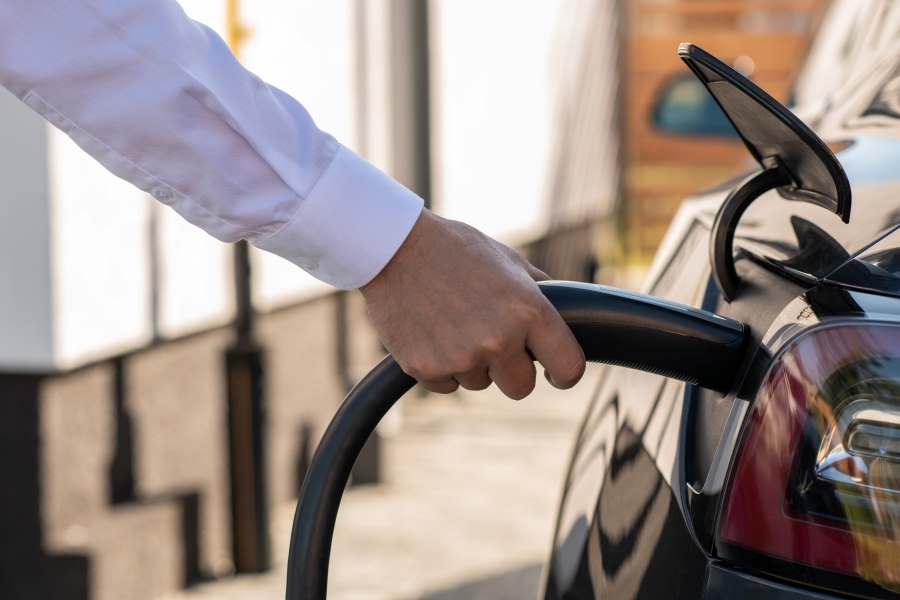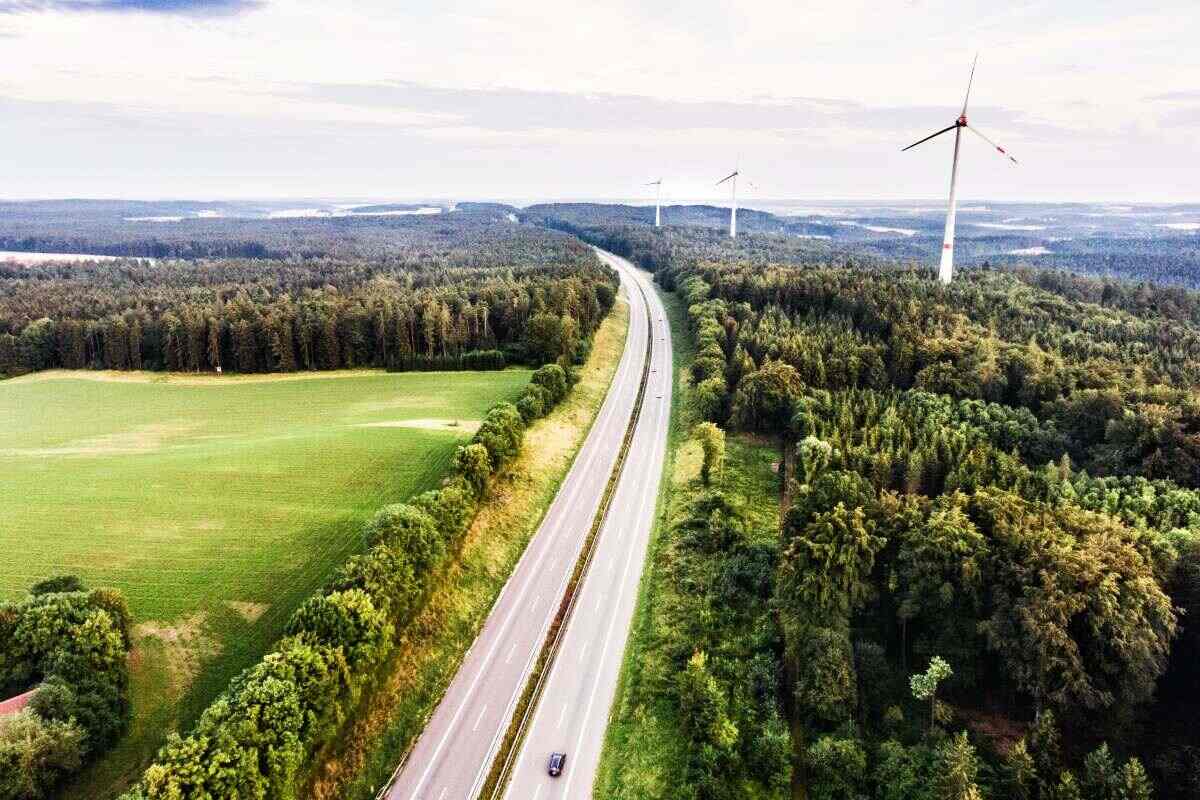Electromobility, hydrogen or liquid gas – alternative drive systems are becoming increasingly relevant in view of climate change and the finite nature of fossil fuels. Various technologies already exist at different stages of development. Not all drive systems are yet fully developed and many of them are still very expensive. In this blog post, we take a closer look at the various alternative drive systems, their development status and future prospects.
Contents
What are alternative drives?
Alternative drives are technologies and fuels that are often more environmentally friendly than conventional combustion engines such as petrol or diesel engines. They can help to reduce the consumption of fossil fuels and minimize the negative impact on the environment.
For alternative drive systems to be a real alternative to combustion engines, their production and components must also come from sustainable or renewable sources. This is the only way to curb environmentally harmful emissions and promote sustainable mobility.
Alternative drives at a glance
Electromobility
The best-known alternative drive is the electric motor. The concept is not new, as the first electrically powered vehicles were already on the road in the 19th century. The energy is stored in lithium-ion batteries and converted into kinetic energy by electric motors. Electric vehicles are emission-free and make a major contribution to reducing environmentally harmful greenhouse gases. While most e-vehicles offer a range of around 500 km, work is already underway on models with a range of 1000 km open_in_new .
Advantages
- Highest efficiency of all alternative drive systems
- Low operating costs
- First registrations up to 2025 are exempt from vehicle tax for 10 years
- Ranges and the charging infrastructure are constantly being expanded
Disadvantages
- Higher acquisition costs than a vehicle with a combustion engine
- Battery production is resource-intensive

Hybrid drive
Hybrid vehicles combine a combustion engine with an electric motor. The electric motor is used for short distances and in city traffic, while the combustion engine ensures long ranges on long journeys or on the highway. However, this does not make hybrid cars emission-free, as fossil fuels are still used.
Advantages
- Sophisticated technology
- Longer ranges than purely electric vehicles
- Lower CO2 emissions
Disadvantages
- Continued dependence on fossil fuels
- Battery takes up space in the trunk
Hydrogen drive
Hydrogen vehicles use fuel cells to generate electrical energy from hydrogen. This in turn drives the electric motor. Fuel cell vehicles only emit heat and water and therefore belong to the class of zero-emission vehicles. Unfortunately, fossil fuels are used in the production of hydrogen and greenhouse gas emissions are emitted.
The greatest potential for hydrogen drives is in commercial vehicles. With the expansion of 63 new hydrogen filling stations open_in_new at intervals of 200 km, this drive is experiencing new momentum long-distance trucks in continuous use.
Advantages
- Fast refueling and long ranges of up to 1,000 kilometers
- No harmful emissions
Disadvantages
- High costs for vehicles and hydrogen
- Producing hydrogen is expensive and energy-intensive
- Very small model selection
- Low availability of hydrogen filling stations
Biofuels
These are obtained from renewable raw materials such as vegetable oil or grain and can be used in conventional combustion engines. Biodiesel, bioethanol and biomethane can also be produced from algae and the yield is much higher than that of vegetable oil. As algae are cultivated in tanks, no arable land is required. However, production is very complex and therefore too expensive to be marketed as a competitive fuel.
Advantages
- Lower prices than for gasoline or diesel
- Can be used in internal combustion engines
Disadvantages
- Competes with food cultivation
- Cultivation and fertilization of plants cause CO2 emissions
- Production is energy-intensive

Liquefied petroleum gas (LPG)
This is a propane-butane mixture that is a by-product of natural gas and crude oil production. When LPG is burned, around 80 % less nitrogen oxide and therefore fewer pollutants are released. While many older vehicle models can still be converted, this option is rarely available for new vehicles.
Advantages
- Lower prices than for gasoline or diesel
- Good availability at German filling stations
- Lower CO2 emissions
Disadvantages
- Not all vehicles can be converted
- Additional tank costs space in the vehicle
- Overall environmental balance of LPG production controversial
Compressed natural gas (CNG)
Natural gas – not to be confused with the LPG described above – consists mainly of methane and has a very low energy density. It must therefore be compressed to 200 bar in order to refuel cars with it. Vehicles that run on LPG emit less harmful CO2. Nevertheless, climate-damaging emissions are produced during the production, transportation and combustion of CNG.
Advantages
- Lower prices than for gasoline or diesel
- Lower CO2 emissions
Disadvantages
- Converting vehicles is complicated and expensive
- Additional tank costs space in the vehicle
- Limited availability at German filling stations
E-Fuels
E-fuels are synthetically produced fuels that are produced using water and carbon dioxide. E-fuels are considered to be low-carbon, as the carbon released during their combustion was previously removed from the atmosphere. However, researchers do not see a future for the widespread use of e-fuels in cars and trucks open_in_new . One of the reasons for this is that the energy infrastructure would have to be massively expanded and the global production of renewable electricity would have to almost double.
Advantages
- Lower CO2 emissions
- Can be added to conventional fuels
Disadvantages
- Poorer efficiency
- Expensive to produce and transport
Future outlook for alternative drives
With the end of the combustion engine in 2035 open_in_new at the latest, the future of alternative drive systems in the vehicle fleet promises a transformative development in the field of sustainable mobility. A key focus will be on the further improvement and spread of electric vehicles.
Advances in battery technology open_in_new will lead to an increased range, shorter charging times and lower acquisition costs, which will further increase the suitability of electric vehicles for everyday use. In addition, innovative solutions such as wireless charging and bidirectional charging are also promising. Wireless charging enables electric vehicles to be charged automatically while parked, making the charging process even more convenient for vehicle users. Bidirectional charging allows electric vehicles not only to draw energy from the grid, but also to feed excess energy back into the grid, which can help stabilize the power grid.
Another promising area is the further development of hydrogen technologies open_in_new , which are becoming more efficient and affordable. Hydrogen-powered fuel cell vehicles could play an important role in the future, particularly in heavy goods vehicles and local public transport.
The most important facts about alternative drives at a glance
Alternative drives are essential for our future in order to curb the greenhouse effect and minimize our dependence on fossil fuels.
Electromobility remains the most important alternative drive for driving forward the mobility transition. Developments in battery technology are leading to greater ranges, shorter charging times and lower acquisition costs.
Hydrogen technology is also gaining ground and the expansion of the filling station network is making it an interesting alternative, especially for heavy commercial vehicles.
Further Fleet Knowledge
If you liked this article and would like to know more about this topic, we recommend these articles.


Workshop checklist: How to find the best workshop



